Draft proposal for history information panelsThis is the second of five panels.
|
Draft proposal for history information panelsThis is the second of five panels.
|
First two years of ConstructionAs required by the Act, it had passed through Regent's Park within a year and by June 1814 it had progressed as far as the Hampstead Road, but with the Maida Hill tunnel still to be completed. This first stretch of canal opened on the Prince Regent's birthday, 12th August 1816. Technical ChallengesAbortive Lock Design In 1815 a patent "hydro-pneumatic" pair of locks was built at Hampstead Road (on the site of this Lock Keeper's Cottage), intended to be balanced by compressed air and hence would lose no water. The hydro-pneumatic lock had been invented by William Congreve (later Sir William), who was also famous for the invention of military rockets. However, the locks proved to be a costly failure, and were eventually scrapped in 1818 when it proved impossible to make important parts of them watertight. The locks were then rebuilt to a conventional design. Construction Techniques |
BenchingThe method of canal cutting shown here was called benching (and was widely used). Spoil was transferred to the bank in stages; from the bed of the canal to a "bench" or shelf half way up the sides - and thence from that bench to the top of the bank from where it could be carted away. |
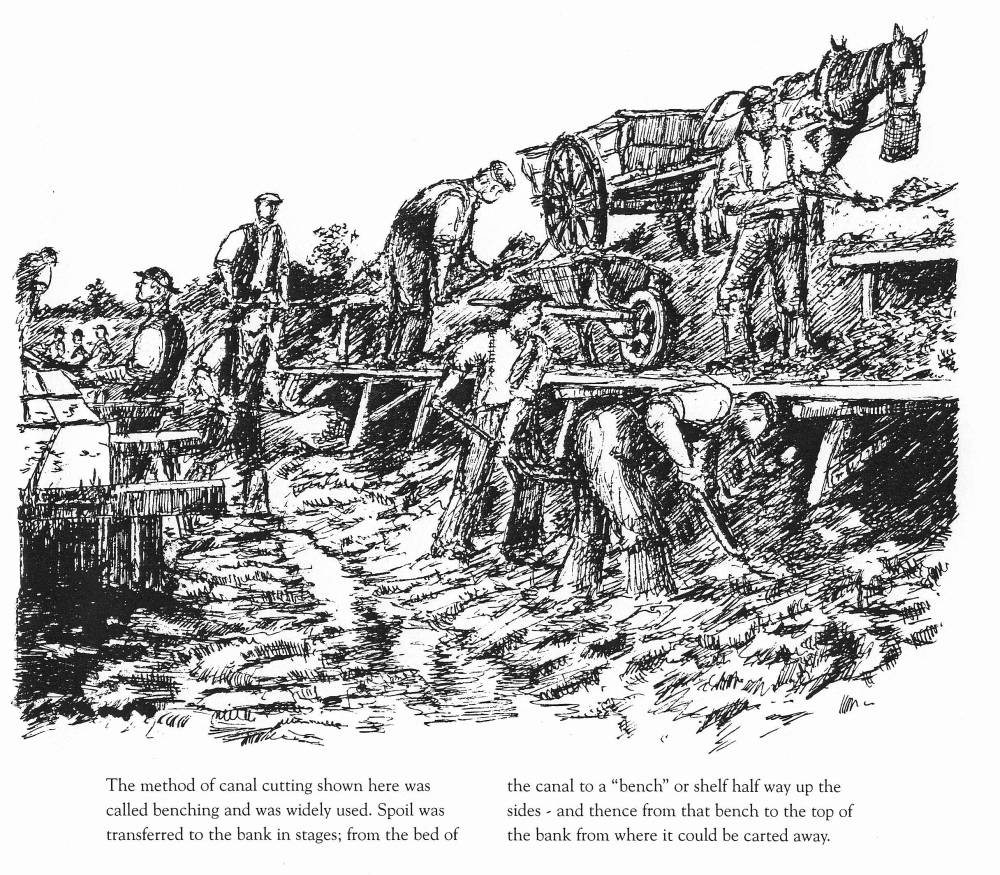
|
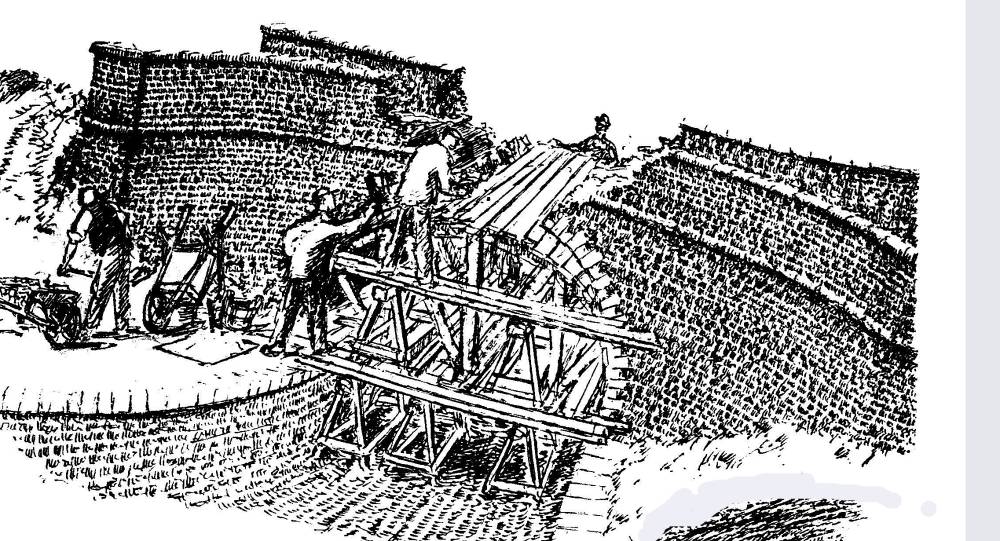
|
| Deep Cuttings | Level and Terrace Cuttings |
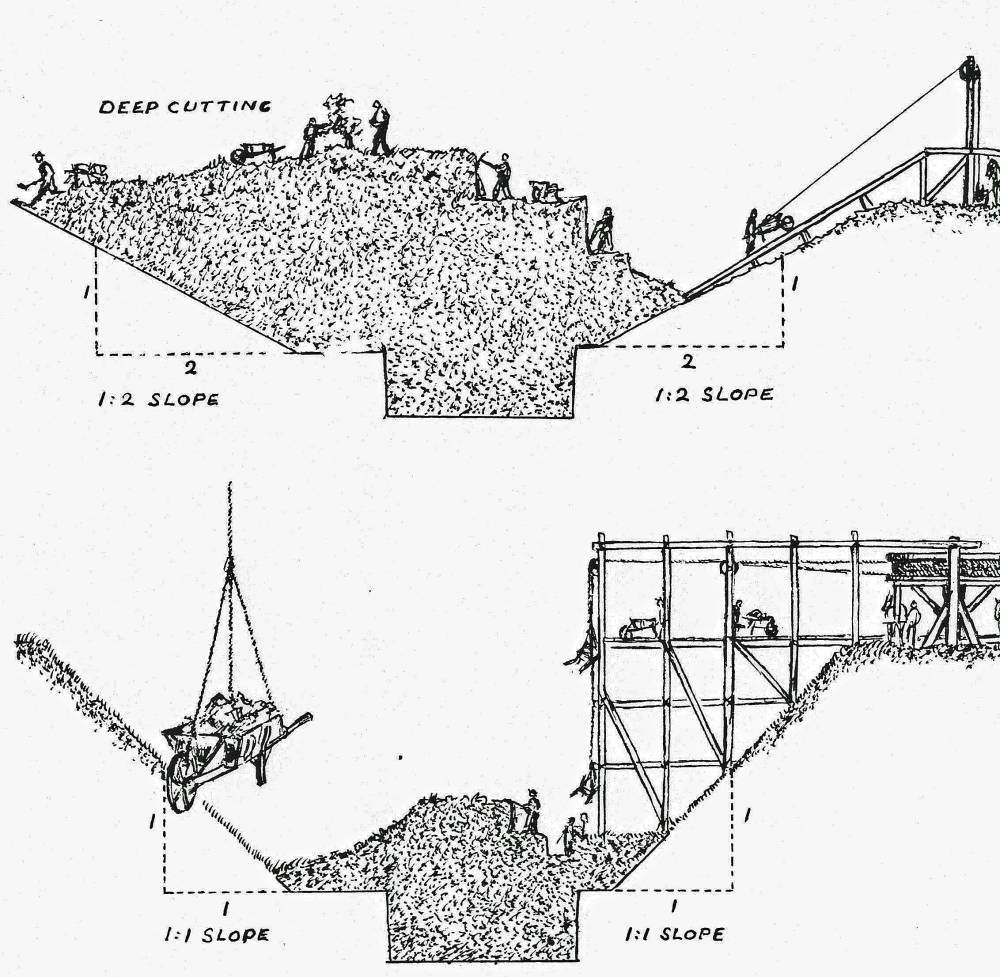
|
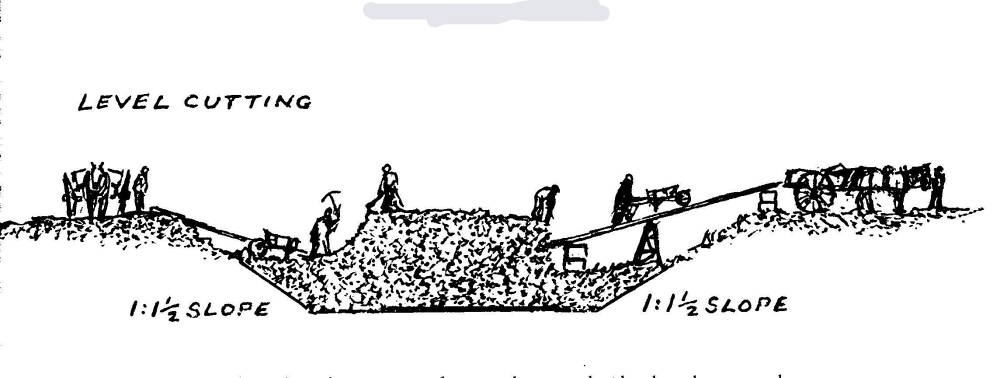
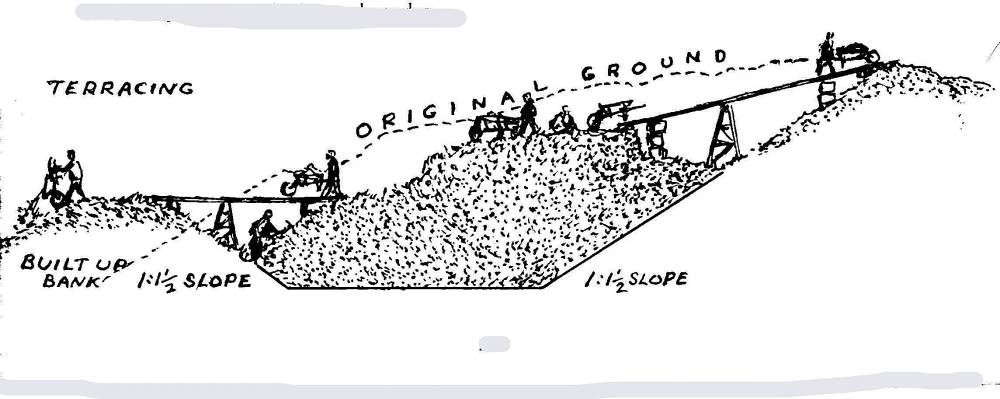
|
Islington TunnelThe design and construction of the Islington Tunnel was a magnificent feat of engineering. It required four million bricks, and it achieved a perfectly straight line 886 metres (? yards) long. The drawing on the right shows the cross section of the tunnel with the timber centering in position. The tunnel's dimensions were 17 ft wide at the water line and 18ft 6in high from the invert to the crown of the arch. 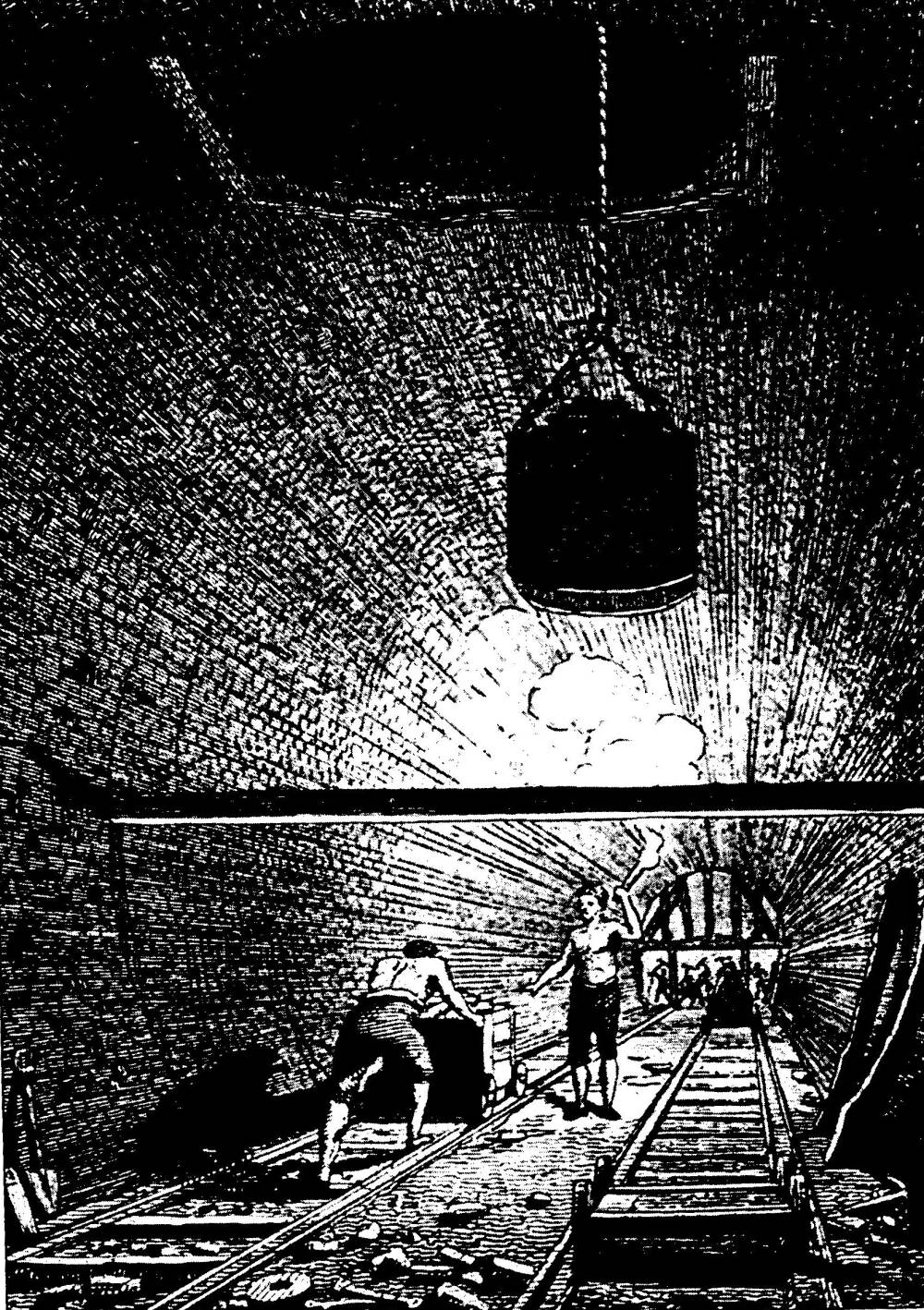
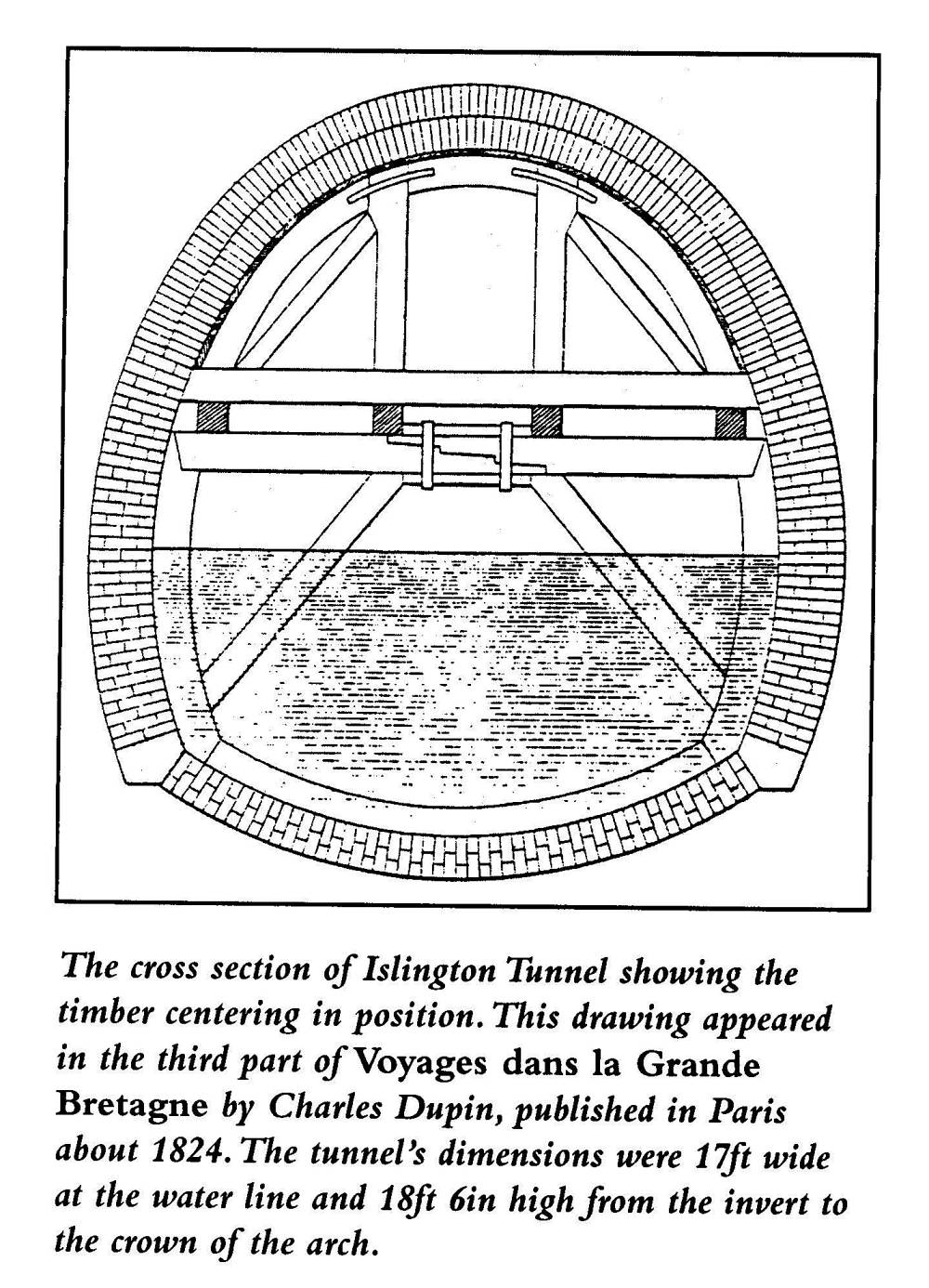
|
|
This drawing shows the Eastern mouth of the Islington Tunnel in August 1819, shortly before the water was admitted.
|
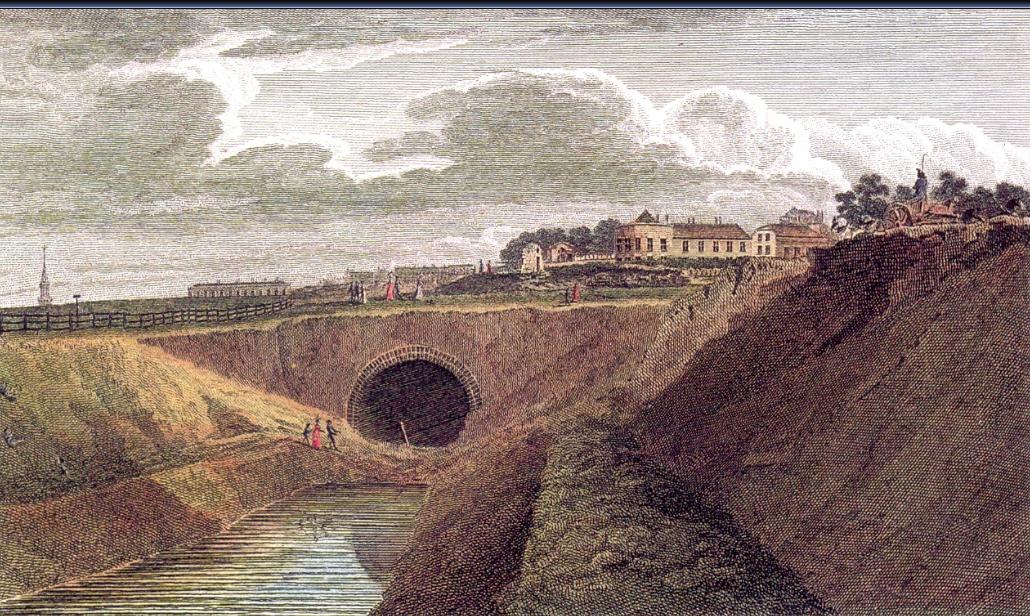
|
Construction CostsThe original estimate was £280,000. The extensive cuttings and tunnel cost far more than expected and shortage of money caused suspension of work for a year, aggravated by an embattled dispute with Mr Agar, a landowner at St Pancras. The canal was saved by a Government loan of £200,000 for one of the first job creation schemees set up under the Poor Employment Act of 1817. This innovative legislation was designed to alleviate widespread unemployment which followed the ending of the Napoleonic Wars. In 1818 the Islington tunnel was finished, followed in 1819 by the stretch from Cambridge Heath to Limehouse. In 1818 a dock for seagoing ships in Limehouse and the large basin at City Road were both authorised. Finally, on 1st August 1820, after eight years' construction and an expenditure of £772,000 the canal was opened for business. The opening was marked with a grand ceremony at Maiden Lane Bridge. 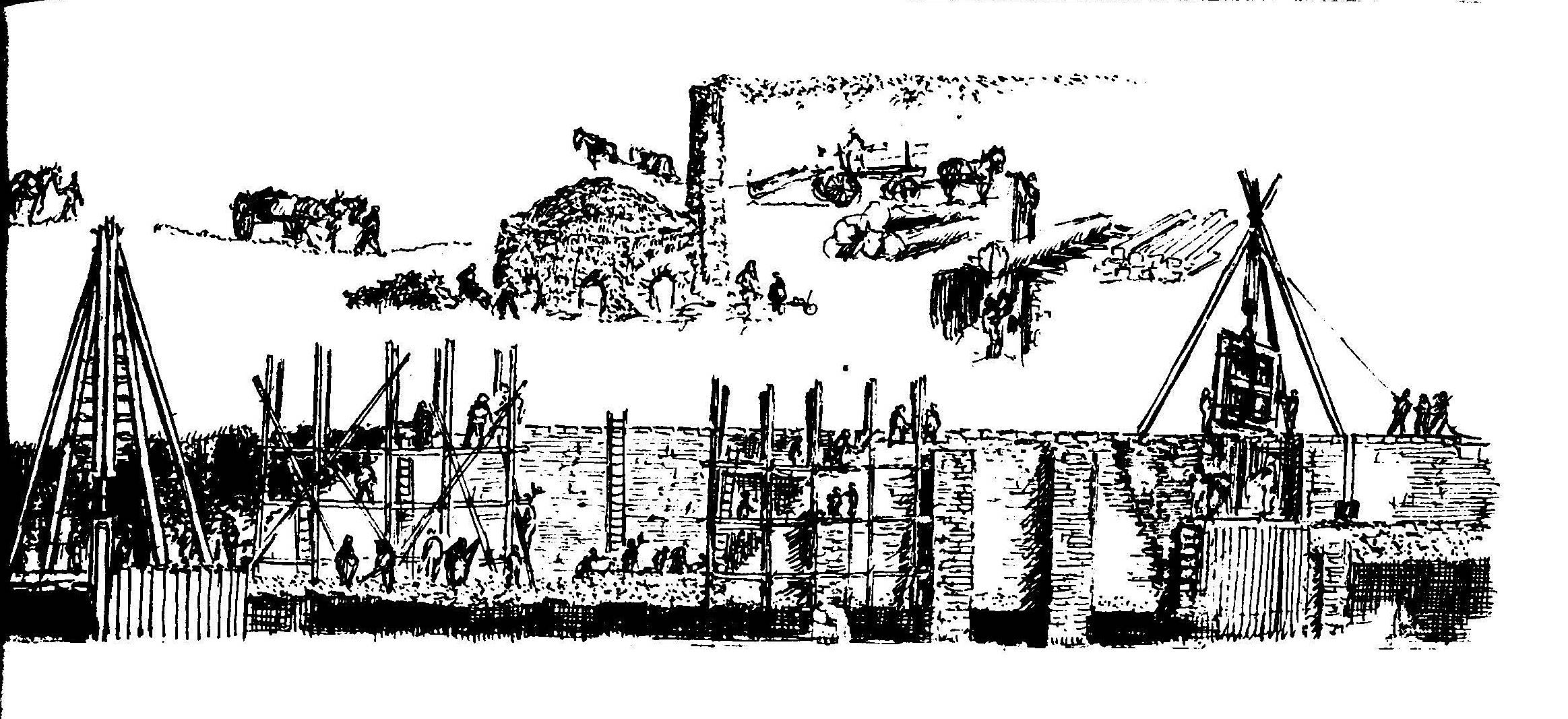
|